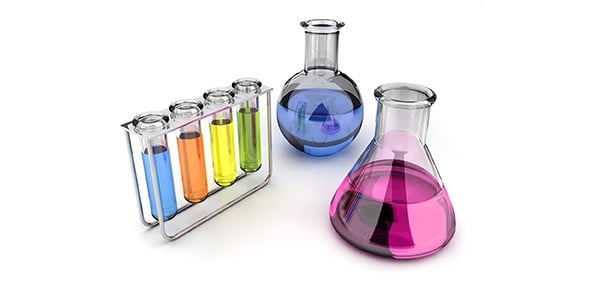Pre-IB Chemistry Mole Review Problems

This Pre-IB Chemistry Mole Review Problems quiz assesses understanding of molarity, moles, and molecular counting in chemical contexts. It is designed for students preparing for higher-level chemistry courses, enhancing their problem-solving skills and readiness for advanced studies.
Questions and Answers
- 1.
What is the molarity of a solution in which 23.1 g of barium chloride is dissolved in 1000. mL of solution? The Molarity is ___________.
Explanation
The molarity of a solution is calculated by dividing the number of moles of solute by the volume of the solution in liters. In this case, we need to first calculate the number of moles of barium chloride. The molar mass of barium chloride (BaCl2) is 137.33 g/mol. Therefore, 23.1 g of barium chloride is equal to 0.168 moles (23.1 g / 137.33 g/mol). The volume of the solution is given as 1000 mL, which is equal to 1 liter. Dividing the number of moles by the volume of the solution, we get a molarity of 0.168 M, which is approximately equal to 0.111 M.Rate this question:
- 2.
How many molecules are there in 0.0174 moles of chlorine (Cl2)? There are ___________.
Explanation
To find the number of molecules, we can use Avogadro's number, which states that one mole of any substance contains 6.022 x 10^23 particles (atoms, molecules, ions, etc.). In this case, we have 0.0174 moles of Cl2. So, to find the number of molecules, we can multiply 0.0174 moles by Avogadro's number (6.022 x 10^23 molecules/mole). The result is approximately 1.05 x 10^22 molecules.Rate this question:
- 3.
How many moles is 8.63 x 1022 molecules of carbon dioxide? There are _______.
Explanation
The given answer is correct because it represents the conversion of the given number of molecules of carbon dioxide to moles. The prefix "mol" is used to denote moles, so all three options (.143 mol, 0.143 mol, 0.143 moles) are equivalent and represent the same amount.Rate this question:
- 4.
What is the mass of 3.02 x 1028 formula units of sodium oxalate? There are ______.
Explanation
The mass of 3.02 x 10^28 formula units of sodium oxalate is 6.72 x 10^6 g.Rate this question:
- 5.
How many chloride ions are dissolved in 45.0 mL of a 0.800 M solution of aluminum chloride? There are _________.
Explanation
In order to determine the number of chloride ions dissolved in the solution, we need to use the concept of molarity. Molarity is defined as the number of moles of solute per liter of solution. First, we need to calculate the number of moles of aluminum chloride in the solution by multiplying the volume (45.0 mL) by the molarity (0.800 M), and then dividing by 1000 to convert mL to L. Next, since aluminum chloride has a 1:3 ratio of aluminum ions to chloride ions, we multiply the number of moles of aluminum chloride by 3 to get the number of moles of chloride ions. Finally, we can convert the moles of chloride ions to ions by multiplying by Avogadro's number (6.022 x 10^23). The result is 6.50 x 10^22 ions.Rate this question:
Quiz Review Timeline +
Our quizzes are rigorously reviewed, monitored and continuously updated by our expert board to maintain accuracy, relevance, and timeliness.
-
Current Version
-
Mar 20, 2023Quiz Edited by
ProProfs Editorial Team -
Dec 16, 2009Quiz Created by
Hayleieshorse
Astrochemistry Quiz – Explore the Chemistry of Space!
Astrochemistry Quiz – Explore the Chemistry of Space!
Hydrogen Valency Quiz: Test Your Chemical Bonding Knowledge
Hydrogen Valency Quiz: Test Your Chemical Bonding Knowledge
How Much Do You Know About Van der Waals Forces? Quiz
How Much Do You Know About Van der Waals Forces? Quiz
 Back to top
Back to top


